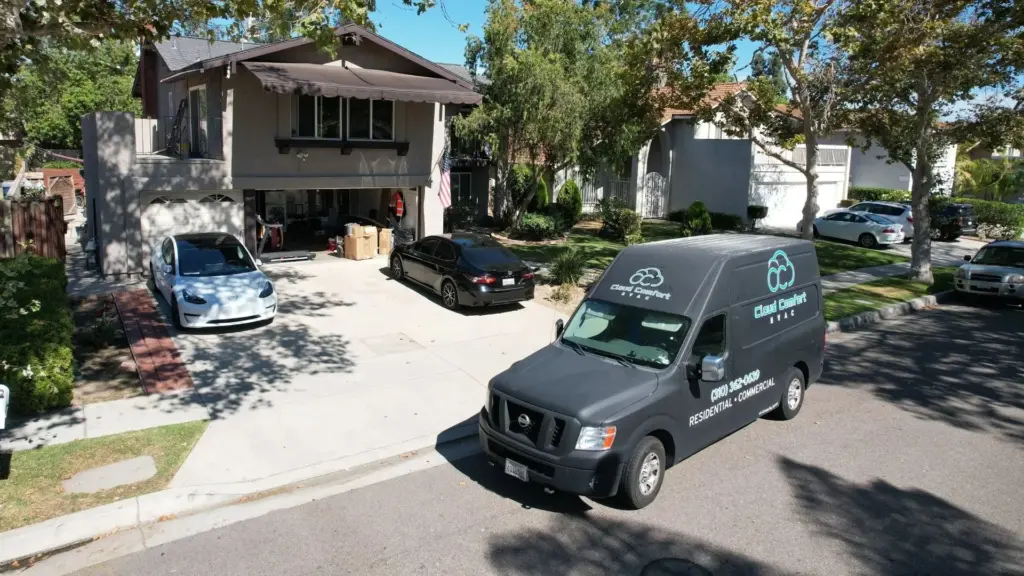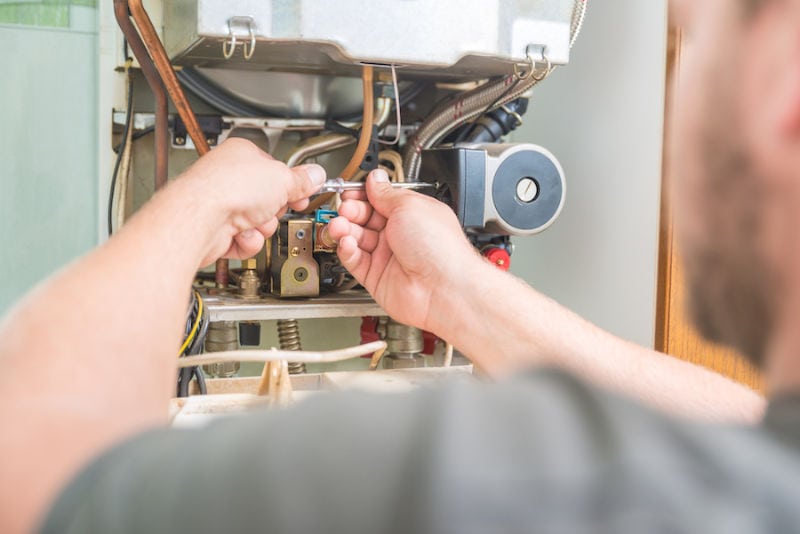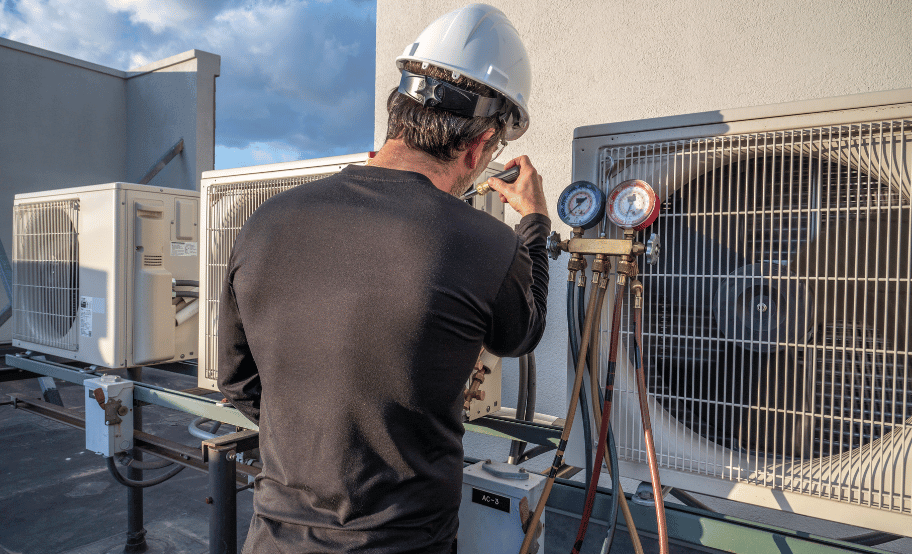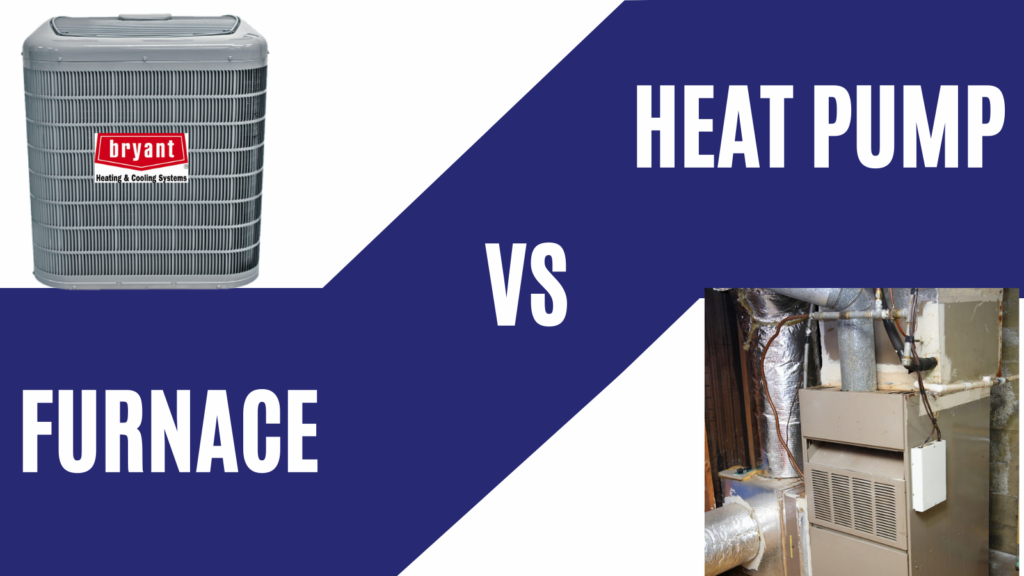
Mini split air conditioners have revolutionized the HVAC industry, providing effective and efficient cooling solutions while offering homeowners a wide range of benefits. These compact systems consist of two main components – the outdoor unit and the indoor unit(s) – that work together to create a comfortable indoor atmosphere.
In this blog, we will explore how mini splits work, their components, mini splits installation process, benefits, maintenance, and troubleshooting common issues.
Components of a Mini Split AC
The outdoor unit houses the compressor, the fan, and the condenser coil. It is responsible for compressing and circulating the refrigerant that carries heat away from the indoor unit(s). The indoor unit(s) mount inside the room where cooling is required. They consist of an evaporator, a fan, and a filter. Refrigerant lines connect the indoor and outdoor units, carrying the refrigerant back and forth in a closed-loop system that forms the heart of the mini-split.
Working Principle
Mini-splits work on the refrigeration cycle, where a refrigerant absorbs heat from one area and releases it in another, creating a cooling effect. When cooling is required, the indoor unit(s) extract the heat from the room air, which is then absorbed by the refrigerant and carried to the outdoor unit. Here, the heat is released into the outdoor environment, and the cooled refrigerant is then circulated back to the indoor unit(s), where it continues its cycle.
During the heating mode, the process is reversed. The outdoor unit extracts heat from the ambient air and carries it indoors, where it is released by the indoor unit(s) into the room. A reversing valve changes the direction of refrigerant flow, enabling this mode of operation. Mini-splits have a fan that circulates the cooled or heated air in the room for even distribution. A thermostat controls the temperature and fan speed, ensuring that the desired comfort level is maintained.
Installation
Choosing the right location for indoor and outdoor units is crucial for optimal performance. The indoor unit(s) should be installed near the ceiling, away from direct sunlight and other heat sources. The outdoor unit should be placed on a stable surface, free from obstructions and debris. Mounting the indoor and outdoor units involves drilling holes into the wall or ceiling for the unit brackets. The refrigerant lines are then run through the holes and connected to the indoor and outdoor units. Electrical connections are made between the units, and the system is tested and commissioned for optimal performance.
Advantages
Energy efficiency is one of the major advantages of mini splits. These systems use less energy than traditional air conditioning units, resulting in lower energy bills. Additionally, they come with zoning capabilities, which allow you to cool or heat only the rooms that are in use, saving energy and improving comfort. The easy installation and flexibility of mini splits make them suitable for a wide range of applications. They can be installed in new construction or existing homes without the need for extensive ductwork. Furthermore, mini splits are designed to improve indoor air quality, as they come equipped with advanced filters that remove harmful particles and allergens from the air.
Maintenance and Care
To ensure optimal performance and prolong the lifespan of your mini split, regular maintenance is essential. This includes cleaning the filters, inspecting the refrigerant lines, and cleaning the indoor and outdoor units. Professional servicing is recommended at least once a year to detect and fix any issues.
Troubleshooting Common Issues
Insufficient cooling or heating can be caused by various factors such as dirty filters, low refrigerant levels, or defective components. Airflow problems may indicate clogged filters, damaged fan blades, or blocked ducts. Water leaks may be caused by clogged drainage lines or improper installation. Electrical issues can lead to the system not turning on or shutting down unexpectedly.
Conclusion
Mini Split AC California offers homeowners a versatile, efficient, and effective cooling and heating solution. By understanding how they work, you can make informed decisions regarding their installation, maintenance, and troubleshooting. Professional installation and maintenance are essential to ensure optimal performance, and regular care can prolong the lifespan of your mini-split unit.
Consider these benefits and factors as you explore your options in selecting and maintaining a mini-split system. Mini-splits have become a popular choice for homeowners as they offer a range of advantages over traditional HVAC systems. With the right care and maintenance, a mini-split can provide reliable comfort for many years to come. Heating and Cooling California has experienced technicians that can help you install and maintain your mini-split system.
If you are looking for the best heating and cooling companies in your area, reach out to Cloud Comfort HVAC a reliable and reputable Heating and Cooling contractor in California at 1-424-376-3298.





